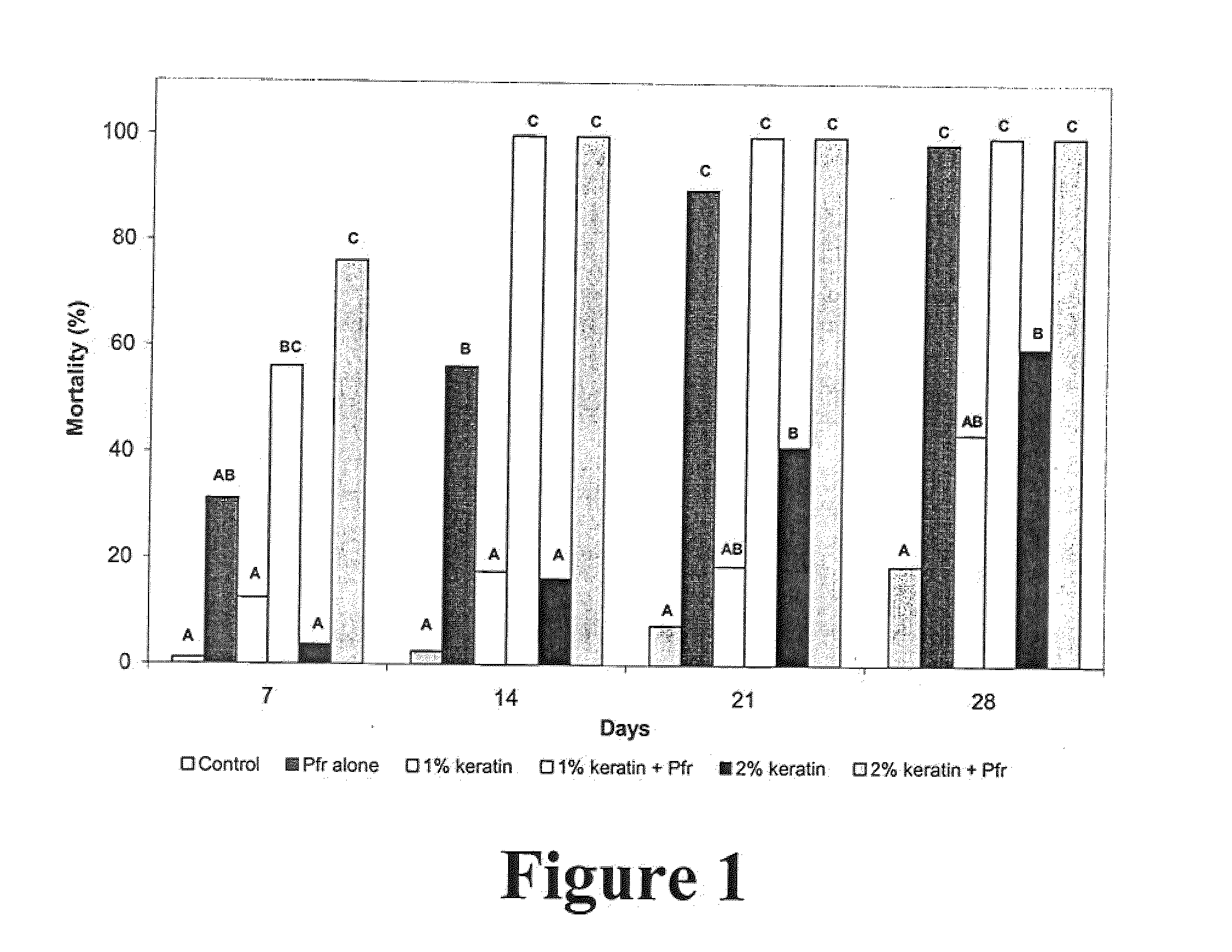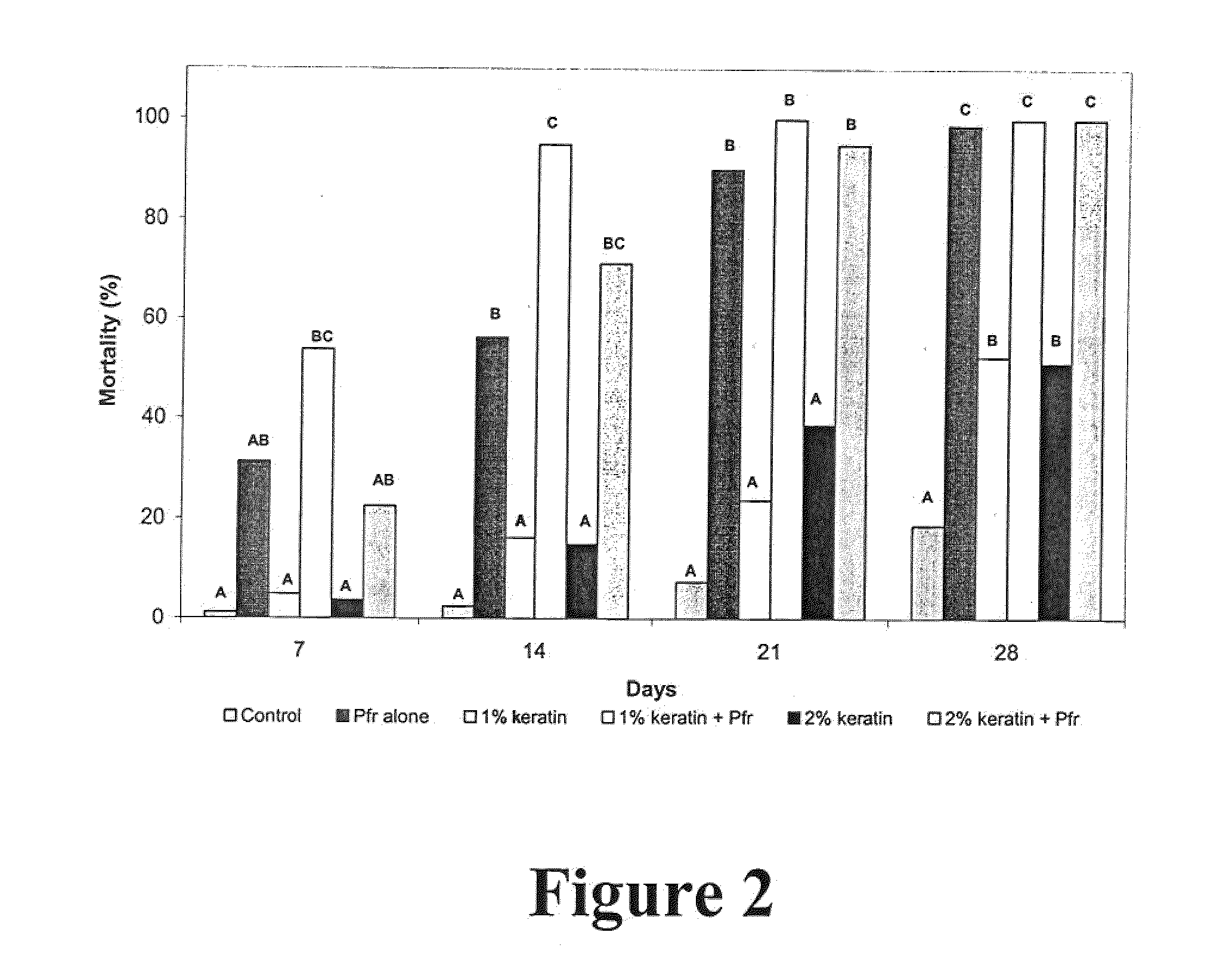Compositions of Keratin Hydrolysate and Microbes for Pest Control Applications
a technology of keratin hydrolysate and keratin hydrolysate, which is applied in the field of compositions of keratin hydrolysate and microorganisms for pest control applications, can solve the problems of weakened trees, affecting the health of plants, and affecting the survival of plants,
- Summary
- Abstract
- Description
- Claims
- Application Information
AI Technical Summary
Benefits of technology
Problems solved by technology
Method used
Image
Examples
example 1
[0033]Several classes of surfactants / foaming agents were screened for compatibility with blastospores of Paecilomyces fumosoroseus. The surfactants were assayed to determine their influence on the rate of germination, viability and conidia production by blastospores of P. fumosoroseus. Compatible surfactants were then assayed for their foam forming properties using a commercially available foam generator. These tests identified keratin hydrolysate as the only suitable surfactant in terms of biocompatibility and foam forming properties. Laboratory assays were conducted to determine the effect of keratin hydrolysate on the efficacy of blastospores of P. fumosoroseus against Formosan subterranean termites. The results show keratin hydrolysate increased the efficacy of P. fumosoroseus. A preliminary field trial was performed to test the ability of a P. fumosoroseus foam formulation to control Formosan subterranean termites in infested trees. The results show this foam formulation of P. ...
PUM
 Login to View More
Login to View More Abstract
Description
Claims
Application Information
 Login to View More
Login to View More - R&D
- Intellectual Property
- Life Sciences
- Materials
- Tech Scout
- Unparalleled Data Quality
- Higher Quality Content
- 60% Fewer Hallucinations
Browse by: Latest US Patents, China's latest patents, Technical Efficacy Thesaurus, Application Domain, Technology Topic, Popular Technical Reports.
© 2025 PatSnap. All rights reserved.Legal|Privacy policy|Modern Slavery Act Transparency Statement|Sitemap|About US| Contact US: help@patsnap.com


